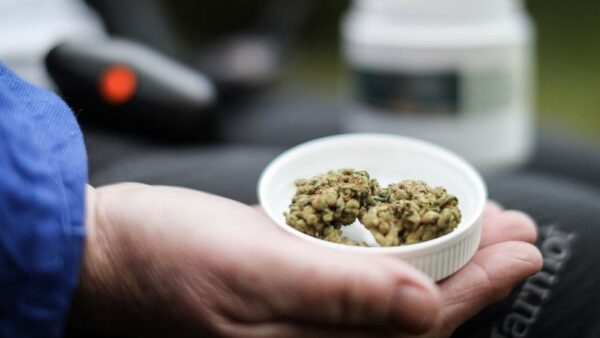If you’re considering medical cannabis treatment, you may have come across the terms “indica” and “sativa”. While these classifications provide a basic introduction to cannabis varieties, they only tell part of the story. At Curaleaf Clinic, we believe in empowering you with knowledge, so let’s explore what these terms really mean and how they differ.
The Difference Between Indica and Sativa
Indica and Sativa are the two main varieties of the cannabis plant, often described as yin and yang – two sides of the same coin, each with unique characteristics. Here’s a brief overview:
- Indica: Historically associated with relaxation and calmness.
- Sativa: Reported for having more uplifting and energising effects.
However, these effects are generalisations and not always accurate. There’s currently not enough clinical evidence to support these claims, and medical cannabis will affect everyone differently. That’s why it’s important to adopt a more scientific approach to understanding cannabis and its effects.
What is Indica?
Indica is a species of the cannabis plant and is commonly associated with relaxation, which is why it’s often seen as a “night-time” option, but these results can vary.
What is Sativa?
Sativa is another species of the cannabis plant and is often associated with enhancing creativity and focus, so it’s usually seen as a “day-time” strain in opposition to indica. But again, these effects are not proven or guaranteed for everyone.
What is a Hybrid?
Most cannabis strains today are hybrids, meaning they’re a mix of both indica and sativa genetics. A hybrid can have one dominant strain or provide an equal balance of the two. Hybrids are created through selective breeding, which means many modern cannabis products are hybrids due to years of crossbreeding.
How do Indica and Sativa Plants Differ in Appearance?
Indica and sativa cannabis plants look different because they adapted to grow in different places. Indica plants are usually short and bushy with wide, dark green leaves. They first grew in cooler areas like Central Asia.
Sativa plants are often taller and slimmer, with narrow, light green leaves. They come from warmer parts of the world, such as Southeast Asia, and Central and South America.
These looks also match how they grow. Indica plants usually flower faster, while sativa plants take more time to mature.
Growing Indica and Sativa: Differences in Cultivation
In licensed facilities, indica and sativa cannabis plants are grown under carefully controlled conditions. These differences in structure, growth speed, and climate preference are important for professional growers to consider when producing medical cannabis.
| Indica | Sativa | |
| Growth time | Shorter flowering period (6-9 weeks) | Longer flowering period (10-16 weeks) |
| Size | Compact size, making them ideal for indoor growing | Tall and slender – better suited for outdoor or greenhouse growing |
| Training | Minimal space management needed; responds well to topping and low-stress training | Requires more space and height control. Techniques like trellising and high-stress training are often used |
| Climate | Thrives in cooler environments | Prefers warm and humid climates |
| Harvest | Earlier harvest windows due to a faster growth cycle | Later harvest period due to prolonged maturation |
In short, indica cannabis plants are usually smaller, faster to flower, and suited to cooler climates, while sativa plants grow taller, take longer to mature, and thrive in warm, humid environments.
Cannabis Classifications
While the “indica,” “sativa” and “hybrid” labels can be helpful for botanists, what’s more important for prescribers is the composition of cannabinoids, terpenes, terpenoids, and flavonoids in the plant. These active compounds are believed to play a crucial role in determining how a medication might work for you, making them more relevant than simply focusing on strain type.
What is Stronger: Sativa or Indica?
Many people believe that the strength of cannabis is based on its THC content, but that’s only part of the picture. When determining the most suitable medication for any eligible patient, we focus on a combination of factors such as THC and CBD levels, terpenes and their concentrations, and the type of product.
The genetic makeup of the plant – whether it’s indica, sativa, or a hybrid – can influence the level of various compounds. However, it’s also important to consider how the plant was grown and processed as this can significantly affect the final product’s makeup. At Curaleaf Clinic, we go beyond the basic classifications of indica and sativa and focus on the individual components of each medication to create the most effective, individualised treatment plans.
THC and CBD Content Comparison: Indica vs Sativa
Many people believe that indica cannabis strains typically have more CBD and less THC, while sativa strains contain less CBD and higher THC levels. In reality, research shows no consistent relationship between these cannabinoid levels and whether a plant is labelled “indica” or “sativa.”
For medical cannabis, the most reliable way to understand potential effects is to examine the product’s full cannabinoid and terpene profile, rather than relying on strain type alone. By focusing on a product’s complete chemical makeup, patients and clinicians can make more informed choices that match individual treatment goals and needs.
Indica vs Sativa – Effects on Mood and Body
Indica and sativa have different effects on your mood and the body. Indica is typically associated with calming, sedative effects that can promote relaxation, ease physical tension, and support sleep. On the other hand, sativa tends to produce uplifting, energising effects that are often reported to stimulate creativity, focus, and sociability. However, it’s important to remember that individuals can react differently to these strains.
Medical Uses of Indica and Sativa Cannabis Strains
At Curaleaf Clinic, our clinicians don’t rely solely on whether a product is labelled indica or sativa when considering treatment options. Instead, these categories may be used as a starting point for discussion about a patient’s needs and preferences.
For example, if a patient reports symptoms that they feel align with the commonly described effects of an indica or sativa product, the clinician might use that as a reference point before reviewing the product’s full cannabinoid and terpene profile, as well as dosing format and medical history.
This approach helps ensure that any medical cannabis prescribed is chosen based on evidence, clinical judgement, and the patient’s individual circumstances — rather than plant type alone.
Indica and Sativa Effects on Sleep
Indica strains are often linked to relaxing or sedative qualities, but the way cannabis affects rest can vary greatly between individuals. Factors such as cannabinoid and terpene profile, dosage, timing, overall health, and individual biology can all play a role.
While some patients report changes in their sleep quality, medical cannabis does not have the same effect for everyone — and it should not be considered a guaranteed sleep aid.
There Any Long-term Effects Associated with Indica or Sativa use?
While products labelled indica or sativa are often linked to certain short-term effects, any potential long-term effects depend less on plant type and more on factors such as overall cannabis use, frequency, THC and CBD content, and individual response.
You can read more about the potential side effects of medical cannabis here.
Latest Research on Indica and Sativa
Recent research suggests that the traditional labels of sativa, indica, and hybrid are becoming outdated, especially in medical use. Cannabis is a complex plant with thousands of active compounds, including cannabinoids and various terpenes, and it’s the interaction of these compounds that shapes the effects – not just the strain type.
You can read more about this in our blog, Beyond Indica and Sativa: Understanding Cannabis through Terpene Profiles, which explains why researchers and our doctors recommend focusing on cannabinoid and terpene levels for a better understanding and categorisation of cannabis.
Making the Right Choice
If you’re considering whether medical cannabis could have a place in your care plan, you can check your eligibility for a consultation with Curaleaf Clinic. Our team is here to answer questions, discuss your options, and guide you through the next steps if you wish to explore this treatment after conventional therapies.









